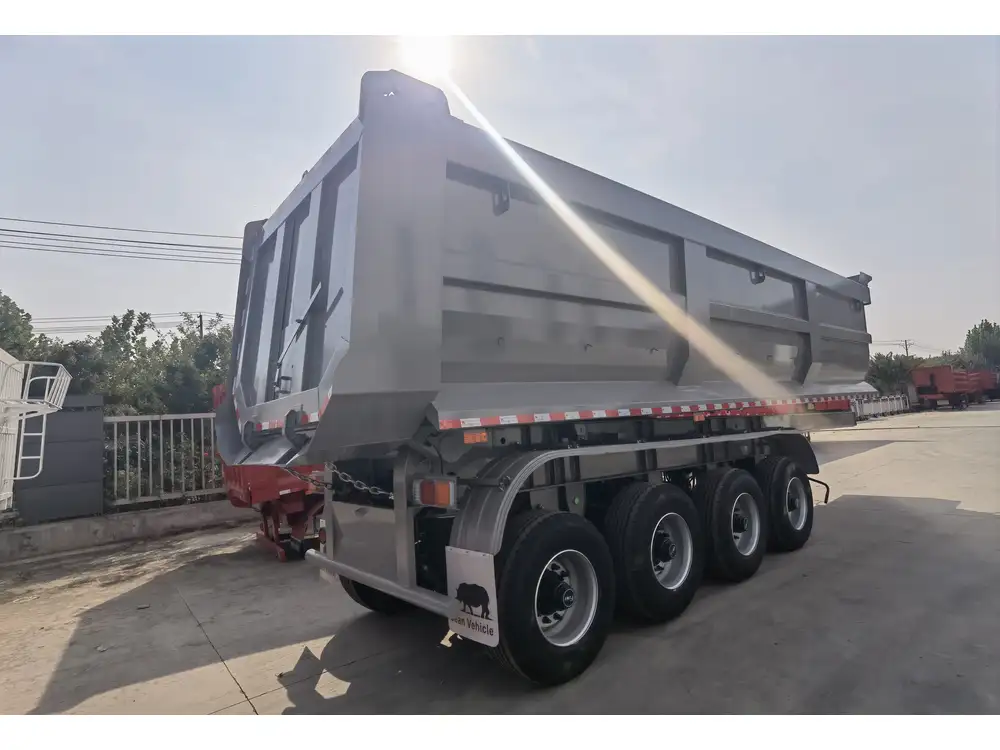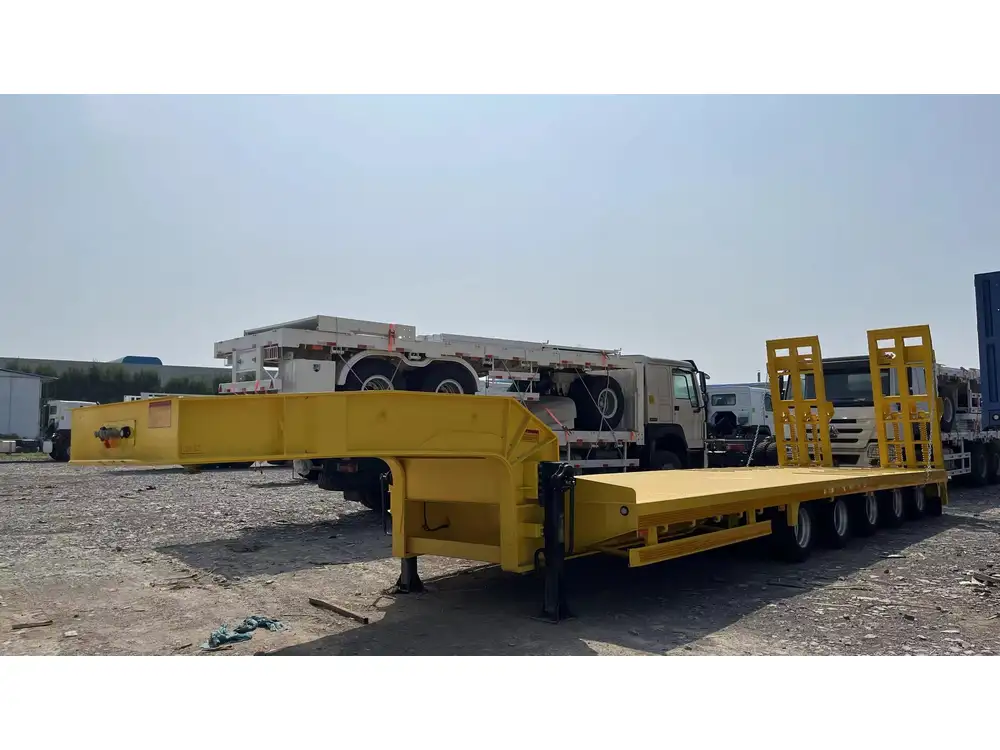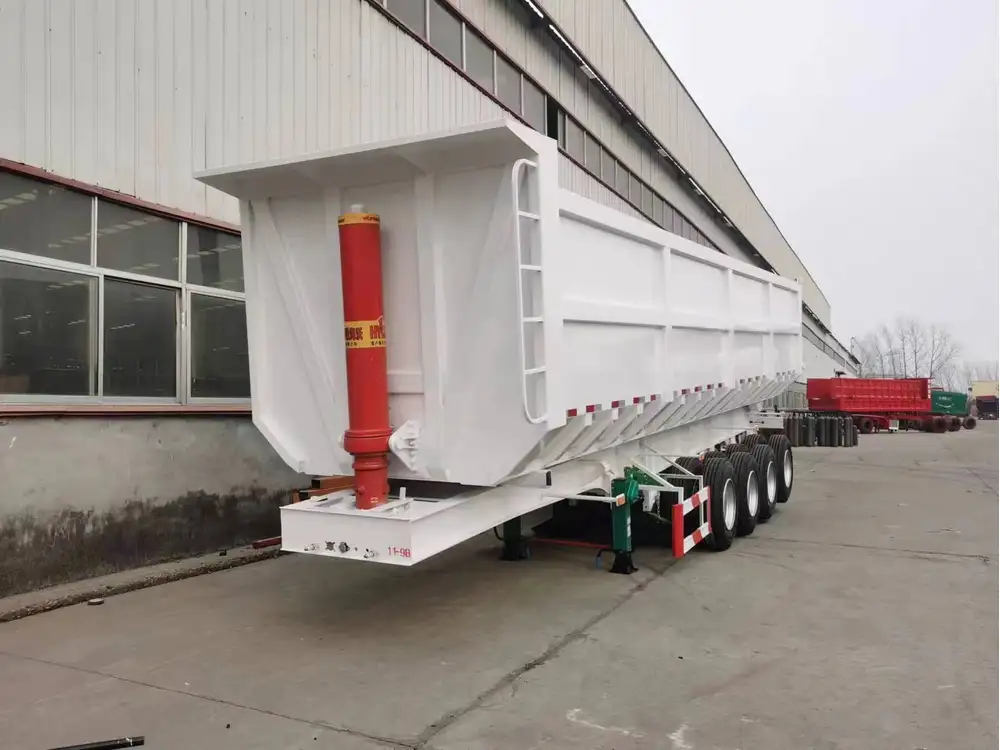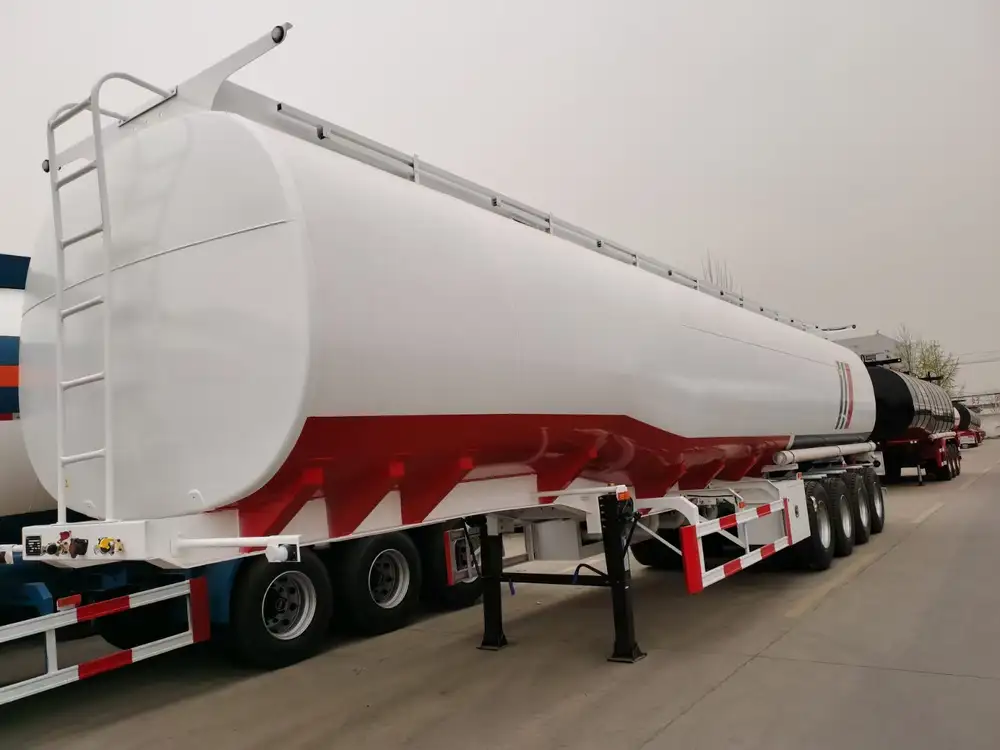When it comes to transporting heavy materials such as dirt, gravel, or mulch, dump trailers become an essential asset for both commercial and residential purposes. However, understanding the capacities of these trailers—especially regarding how much dirt a dump trailer can hold—can often be confusing. In this comprehensive guide, we’ll dissect this topic, exploring various factors that influence the carrying capacity of dump trailers.
The Anatomy of a Dump Trailer
Before delving into payload capacities, it’s crucial to understand the main components of a dump trailer and how they affect performance.
| Component | Description |
|---|---|
| Frame | Made from durable steel, it supports the entire load. |
| Axles | Typically equipped with one or more axles, influencing weight distribution. |
| Tires | Designed to carry heavy loads; their size affects the trailer’s efficiency. |
| Hydraulic Lift | Powers the tipping mechanism, allowing for easy unloading. |
Understanding these components will help you gauge how much dirt your dump trailer can manage, ensuring that you make informed purchasing and operational decisions.
Factors Influencing Capacity

1. Trailer Size and Model
Dump trailers come in various sizes, commonly ranging from 5 to 20 cubic yards or more. Smaller models may hold up to 5 cubic yards, while larger ones can exceed 20 cubic yards. Here’s a brief overview of commonly used sizes:
| Trailer Size (Cubic Yards) | Dirt Capacity (Approx. Weight in Pounds) |
|---|---|
| 5 | 5,000 lbs |
| 10 | 10,000 lbs |
| 15 | 15,000 lbs |
| 20 | 20,000 lbs |
2. Weight of Dirt
The weight of your load matters considerably. The moisture content of the dirt, along with its composition (sandy, clayey, loamy), can significantly alter its overall weight. On average, dry dirt weighs around 1,600 to 2,200 pounds per cubic yard. Let’s break it down:
- Sandy Soil: Lighter, approximately 1,600 lbs/cubic yard.
- Clay Soil: Heavier, reaching up to 2,200 lbs/cubic yard.
- Loamy Soil: Generally weighs about 1,800 lbs/cubic yard.
3. Legal Weight Limits
When hauling loads, adhering to legal weight limits is crucial to avoid fines or penalties. Most states have regulations that dictate the maximum weight on public roads, often around 80,000 pounds for a fully loaded truck and trailer combination. Knowing your truck’s and trailer’s weight specifications can help avoid exceeding these limits.

4. Load Distribution
The way the material is loaded into the dump trailer can also impact capacity. Even distribution helps maintain stability and optimize load capacity, protecting your vehicle from wear and tear. Uneven weight can lead to undue stress on the trailer’s components and increase the likelihood of accidents.
How to Calculate Your Trailer’s Capacity
Accurately determining how much dirt a dump trailer can hold involves a straightforward mathematical approach. Here’s a step-by-step guide:
Identify Your Trailer’s Volume: Check the specifications of your dump trailer for its volume in cubic yards.
Convert to Cubic Feet: Multiply your cubic yards by 27 (since 1 cubic yard = 27 cubic feet).
Estimate Weight Based on Soil Type: Align the soil type’s weight per cubic foot.
Calculate Maximum Load: [ \text{Maximum Load} = \text{Trailer Volume (cubic feet)} \times \text{Weight of Load (lbs/cubic foot)} ]
Example of Calculation
Let’s consider a 10 cubic yard dump trailer hauling sandy dirt:
Volume in Cubic Feet: [ 10 \text{ cubic yards} \times 27 \text{ cubic feet/cubic yard} = 270 \text{ cubic feet} ]
Weight of Sandy Soil: [ 1,600 \text{ lbs/cubic yard} \approx 59.3 \text{ lbs/cubic foot} ]
Maximum Load: [ 270 \text{ cubic feet} \times 59.3 \text{ lbs/cubic foot} \approx 16,011 \text{ lbs} ]
Thus, a 10 cubic yard dump trailer can transport approximately 16,011 lbs of sandy dirt.

Practical Applications of Dump Trailers
1. Landscaping
Dump trailers are invaluable in landscaping projects, offering efficient transportation for soil, mulch, and gravel. Their capacity allows for the swift movement of bulk materials, reducing the number of trips required.
2. Construction
In construction, dump trailers play a vital role in hauling significant quantities of materials like gravel, cement, and soil, streamlining the workflow on job sites.

3. Agriculture
For agricultural businesses, dump trailers facilitate the movement of fertilizers and soil amendments, helping to maintain efficient operations on the land.
Frequently Asked Questions (FAQs)
What Is the Best Size Dump Trailer for Home Use?
For regular home use involving landscaping or small construction projects, a trailer that can hold between 5 to 10 cubic yards is typically sufficient.

Can I Exceed the Maximum Load?
Exceeding the maximum load is highly discouraged. It can not only damage your trailer and vehicle but also pose significant safety risks while driving.
How Do I Maintain My Dump Trailer?
Regular maintenance, including checking the hydraulic system, inspecting tires, and ensuring the frame is rust-free, can extend the lifespan of your trailer and enhance its performance.
What Accessories Can Improve Dump Trailer Efficiency?
Investing in accessories like tarp systems, toolboxes, and extra brakes can significantly enhance the functionality and safety of your dump trailer.

Final Thoughts
Understanding how much dirt a dump trailer can hold is fundamental for anyone needing to transport materials efficiently and safely. From the trailer’s size and the weight of the dirt to legal constraints and maintenance, every factor plays an essential role in determining its capacity. Armed with this knowledge, you can optimize your operations, ensuring that projects run smoothly and without delay.
By utilizing this guide, users can make informed decisions that enhance their productivity and mitigate risks related to material transport. Whether you’re a contractor, landscaper, or homeowner, understanding the science behind dump trailer capacities will undoubtedly benefit your endeavors.



